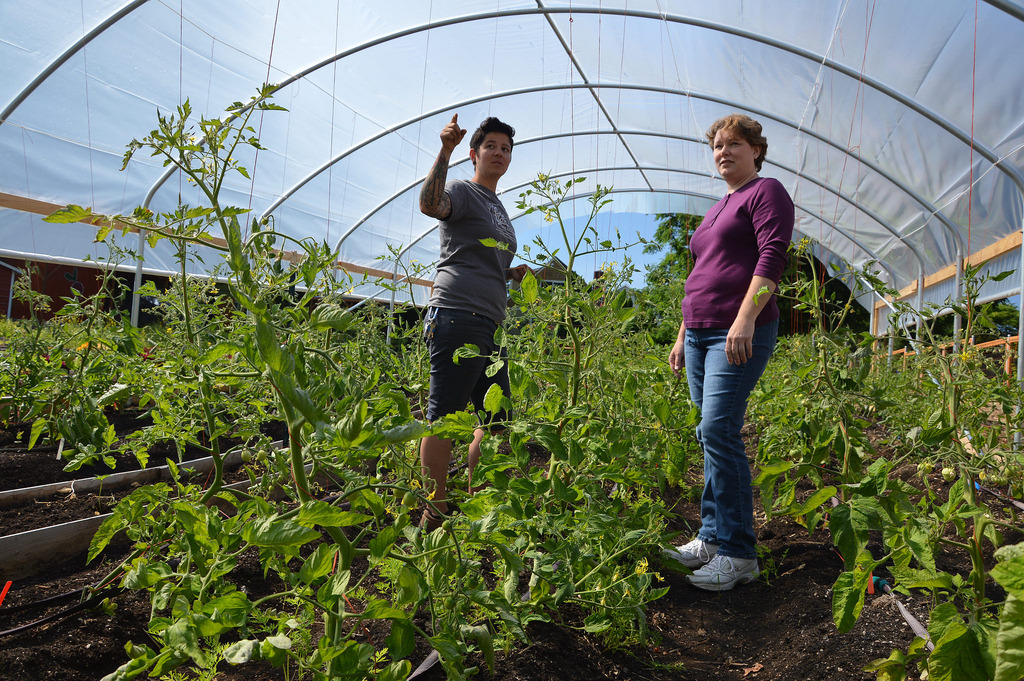World hunger and global deforestation are two of the biggest problems assaulting humanity right now. Sure, there’s also climate change, but it can almost be considered an umbrella under which all of the global threats from nature is stemming from. There are already proposed steps to combat climate change, but in the case of deforestation and world hunger, Urban Farming could be humanity’s best hope.
According to a recent study published in the Scientific Reports, over half of Europe’s forests have been destroyed due to farming or urban development. Granted, this occurred over the last 6,000 years, but the result is still telling.
These findings mimic the widespread loss of forests, jungles, rain forests, and even coastal trees all over the globe. While there’s very little that the average person can do to address these bigger concerns, there is a solution that is within the reach of everyday people in the form of Urban Farming.
Urban Farming is basically where farmers would grow vegetables, crops, fruits, or berries within the city limits instead of through traditional farmlands. As Futurism notes, this practice essentially puts the food near the consumers who will be buying or eating them and also achieves production levels that are almost comparable to more conventional methods.
The trend of putting food production inside cities, suburbs, or even warehouse areas also addresses the escalating need for more agricultural land. This is due to the many forms that Urban Farming can take, from the simplest home gardens to the most complex three-dimensional industries that are finding their way into major U.S. metropolises.
Starting an Urban Farm is easy, as well, thanks to equipment and methods being within easy reach. As the president of the company Urban Organics, Dave Haider told the publication, there’s a huge potential in Urban Farming.
“You have to look at these facilities in cubic feet as opposed to square feet. We can really put out a lot of produce from a facility like this,” Haider said, referring to one of his vertical farms.



 Lost in space: MethaneSat failed just as NZ was to take over mission control – here’s what we need to know now
Lost in space: MethaneSat failed just as NZ was to take over mission control – here’s what we need to know now  Trump Signs Executive Order to Boost AI Research in Childhood Cancer
Trump Signs Executive Order to Boost AI Research in Childhood Cancer  Tabletop particle accelerator could transform medicine and materials science
Tabletop particle accelerator could transform medicine and materials science  Blue Origin’s New Glenn Achieves Breakthrough Success With First NASA Mission
Blue Origin’s New Glenn Achieves Breakthrough Success With First NASA Mission  FDA Pilot Program Eases Rules for Nicotine Pouch Makers
FDA Pilot Program Eases Rules for Nicotine Pouch Makers  Trump and Merck KGaA Partner to Slash IVF Drug Costs and Expand Fertility Coverage
Trump and Merck KGaA Partner to Slash IVF Drug Costs and Expand Fertility Coverage  CDC Vaccine Review Sparks Controversy Over Thimerosal Study Citation
CDC Vaccine Review Sparks Controversy Over Thimerosal Study Citation  Neuralink Expands Brain Implant Trials with 12 Global Patients
Neuralink Expands Brain Implant Trials with 12 Global Patients  NASA Partners with Katalyst to Save Swift Observatory with Innovative Docking Mission
NASA Partners with Katalyst to Save Swift Observatory with Innovative Docking Mission  NASA Astronauts Wilmore and Williams Recover After Boeing Starliner Delay
NASA Astronauts Wilmore and Williams Recover After Boeing Starliner Delay  SpaceX Starship Test Flight Reaches New Heights but Ends in Setback
SpaceX Starship Test Flight Reaches New Heights but Ends in Setback  Lab-grown meat: you may find it icky, but it could drive forward medical research
Lab-grown meat: you may find it icky, but it could drive forward medical research  Kennedy Sets September Deadline to Uncover Autism Causes Amid Controversy
Kennedy Sets September Deadline to Uncover Autism Causes Amid Controversy  Ancient Mars may have had a carbon cycle − a new study suggests the red planet may have once been warmer, wetter and more favorable for life
Ancient Mars may have had a carbon cycle − a new study suggests the red planet may have once been warmer, wetter and more favorable for life 































